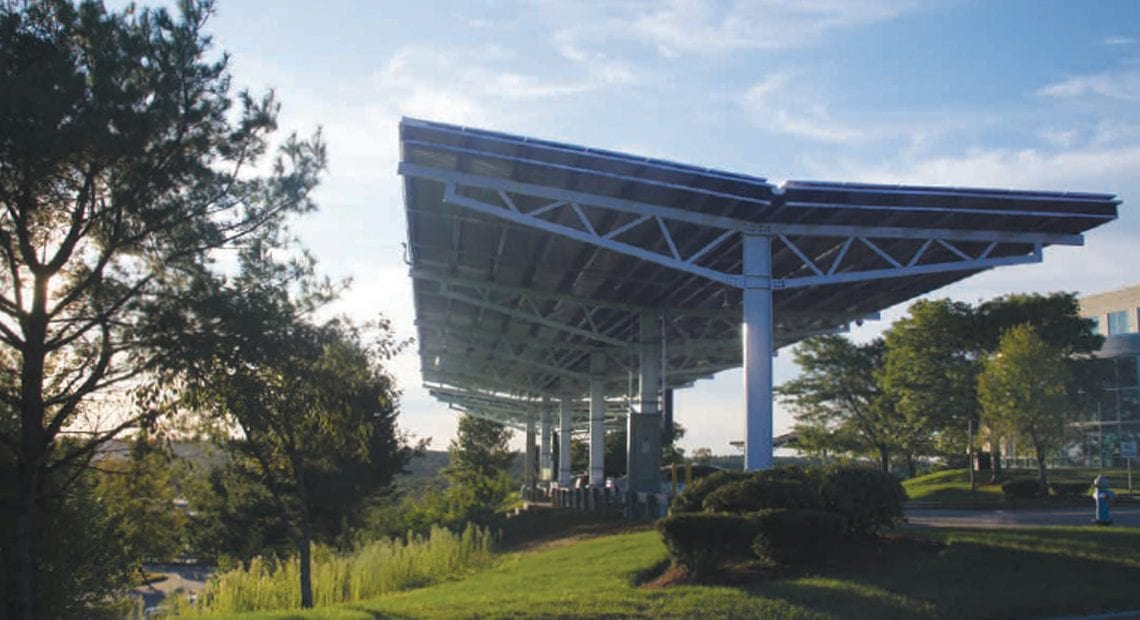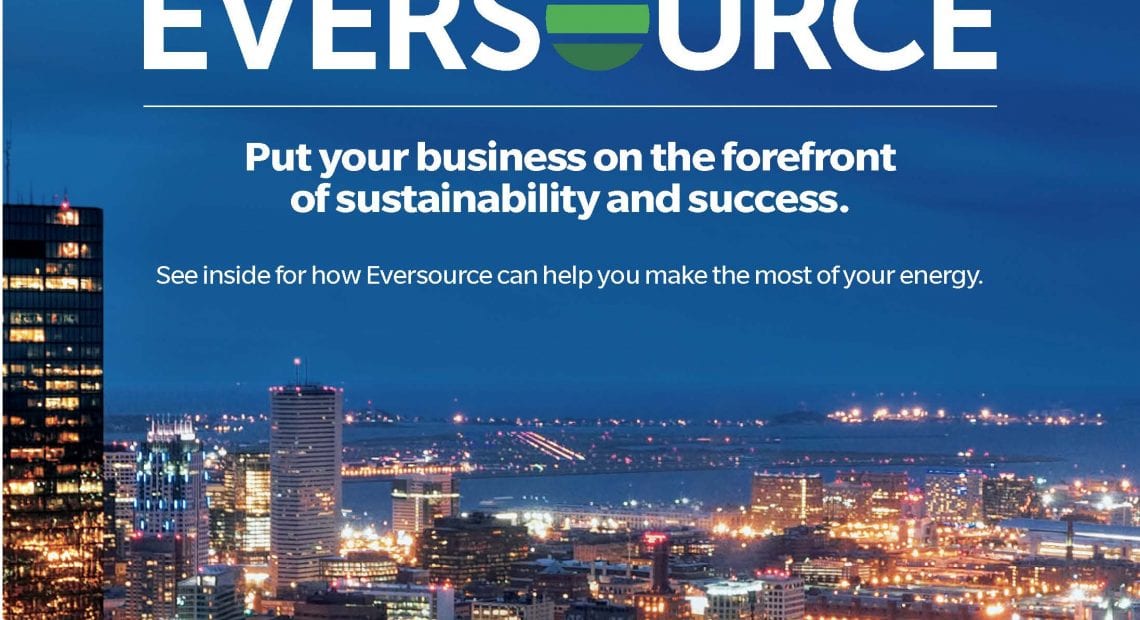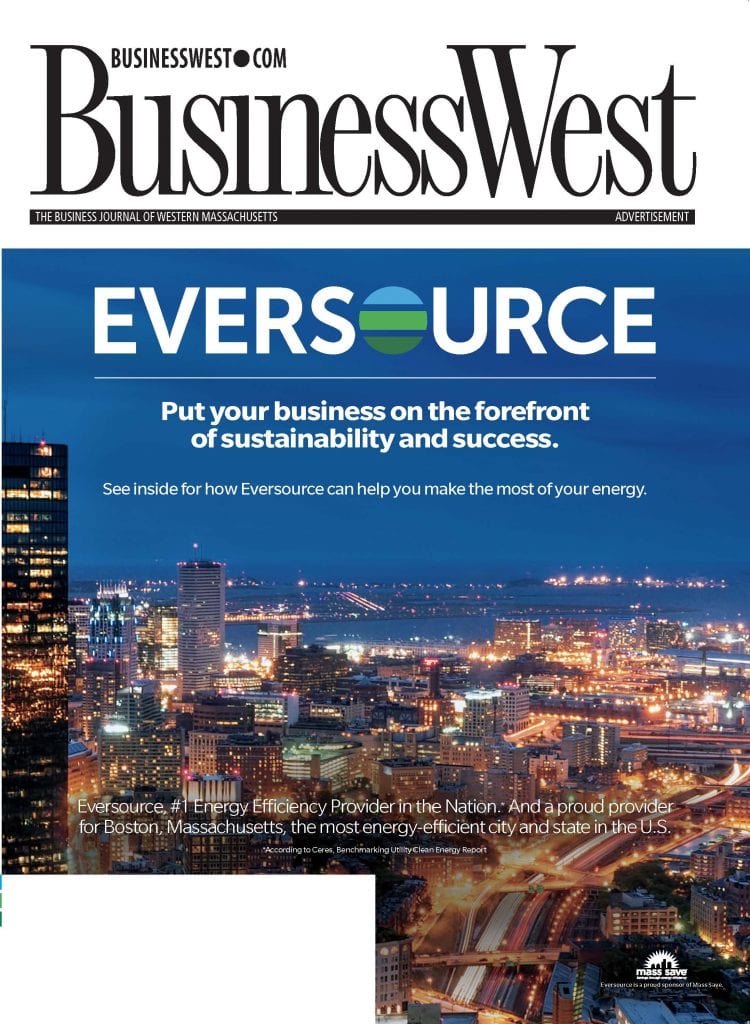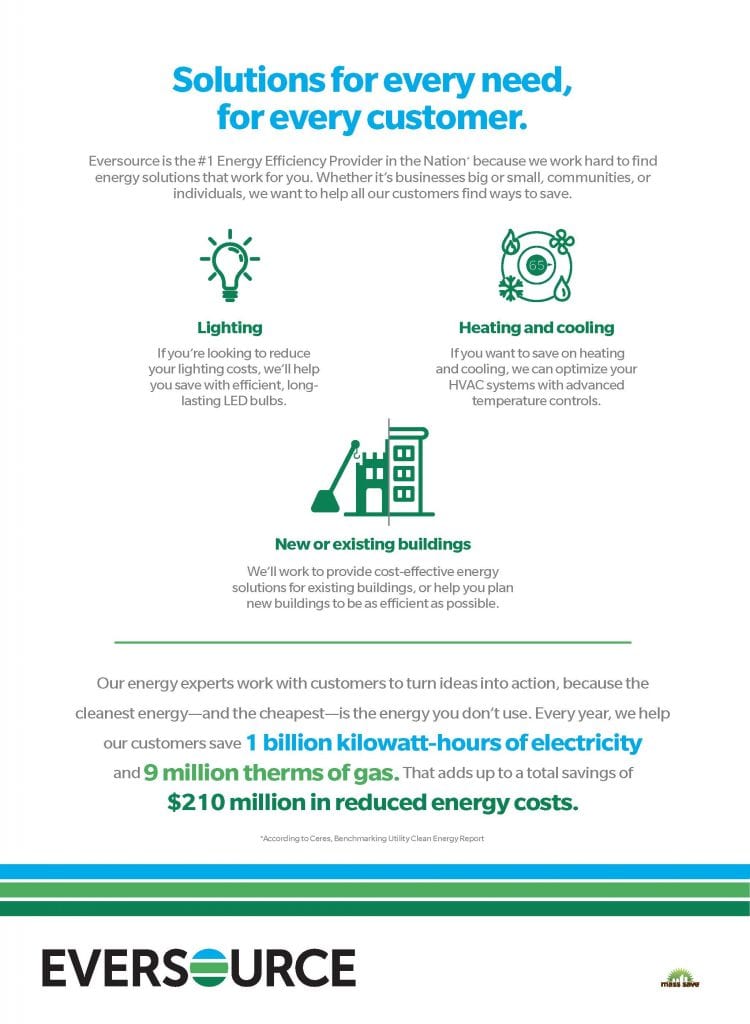The Clock Is Ticking
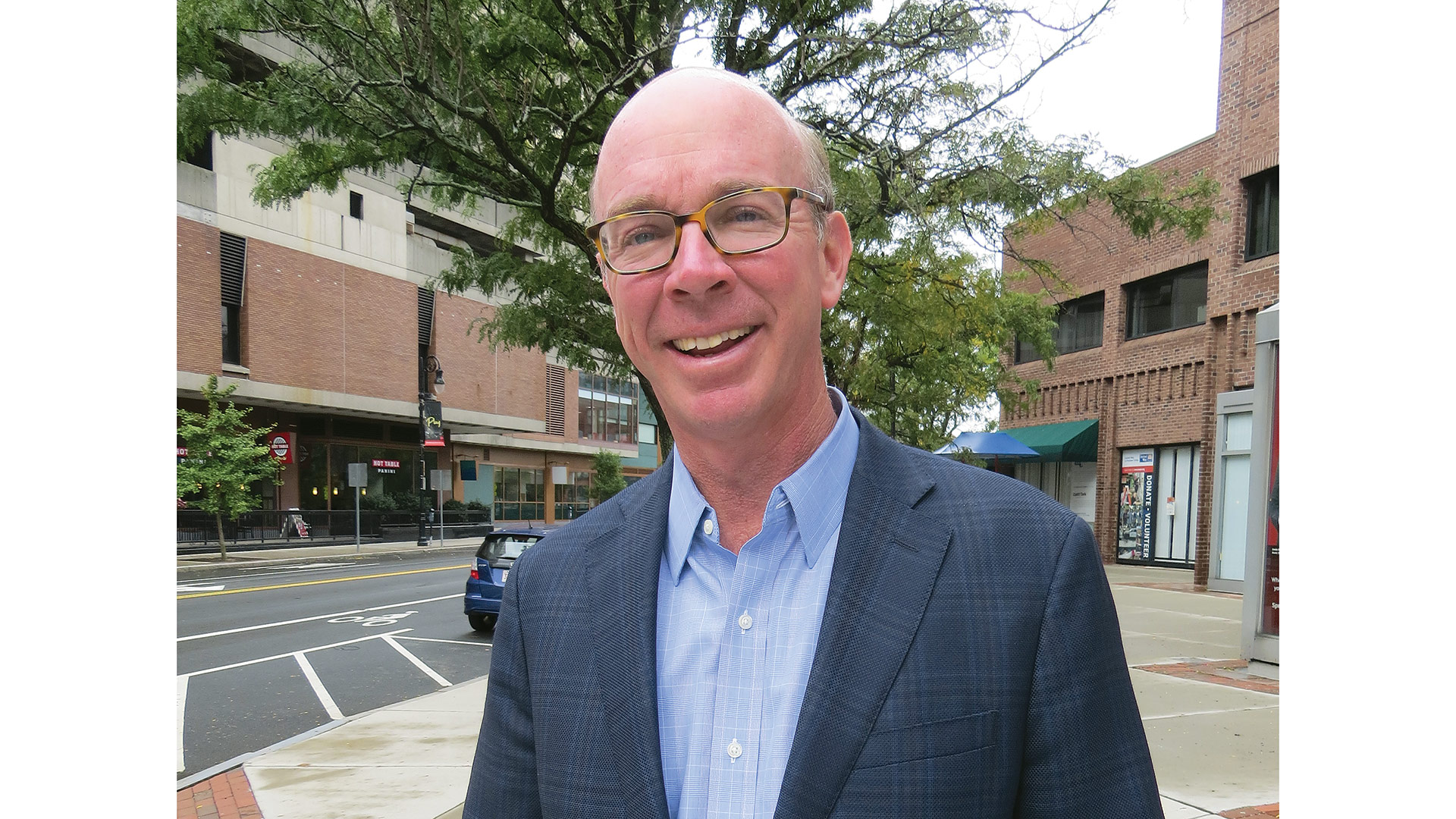
Jim Hunt, Eversource’s vice president of Regulatory Affairs and chief Communications officer.
Jim Hunt has one of those countdown clocks on his computer.
But unlike most of these mechanisms — which will tick down the minutes until a presidential debate starts or the months and days until the next summer Olympics will commence — this one has a very long end date. Or not so long, depending on who you’re talking with.
That would be 2030, the date by which Eversource Energy, which Hunt serves as senior vice president of Regulatory Affairs and chief Communications officer, intends to be carbon-neutral.
It’s an ambitious target, and therefore the next 10 years will certainly go by quickly as a result, said Hunt, noting that, while other utilities, especially those that are still vertically integrated and generate power as well as distribute it, have also set goals for carbon neutrality, most have set their clocks to 2050, 2040, or perhaps 2035.
“This is the most ambitious strategy for any utility in the country,” he told BusinessWest. “But we also have one of the strongest clean-energy and carbon-reduction policies from our state as well. So we think we can demonstrate to other utilities and to the world that, while these may be aggressive, they are attainable, and we’re going to meet them.”
Hunt met with BusinessWest late last month as part of a packed day of stops in the City of Homes. The schedule also included visits with other media outlets, Springfield Mayor Domenic Sarno, and Rick Sullivan, executive director of the Western Massachusetts Economic Development Council.
There was plenty to talk about, including Eversource’s pending acquisition of Columbia Gas operations in Massachusetts — an important deal that was due to receive final approval from the Department of Public Utilities as this issue was going to press — as well as COVID-19 and its impact on the region and the business community, and even a few power outages resulting from a storm that week.
“That last mile is always the roughest. It’s going to be a challenge to squeeze as much as we can out of facilities and out of our vehicles, but we’re committed to doing so because we need to lead by example.”
But the main topic of conversation — in part because Hunt couldn’t talk much about the Columbia Gas purchase until it was final — involved the company’s ongoing efforts to promote clean-energy use and reduce carbon emissions — including its own drive to become carbon-neutral.
It is an ambitious goal, said Hunt, and much will have to go right for it to be attained. Actually, the utility is already roughly 90% of the way there, he noted, but the last 10% will be the most challenging.
“That last mile is always the roughest,” he noted. “It’s going to be a challenge to squeeze as much as we can out of facilities and out of our vehicles, but we’re committed to doing so because we need to lead by example.
“If we’re going to help our region achieve its goals of 80% cardon reduction by 2050, if we’re going to be that clean-energy partner in energy efficiency, renewables, and other solutions for our customers and our state policy makers,” he went on, “then we think we can do more to go above and beyond and lead by example.”
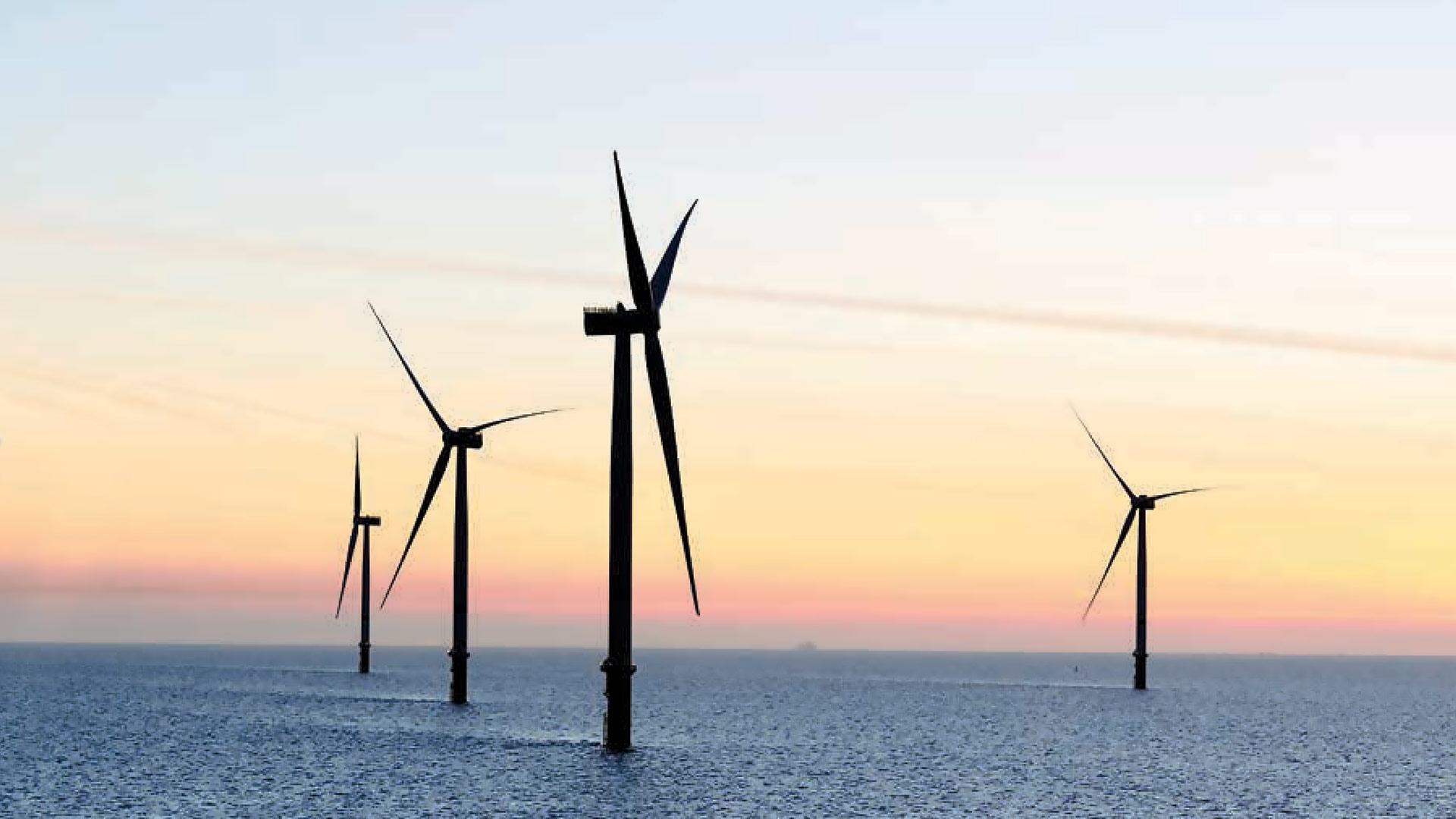
Jim Hunt says increased reliance on solar and wind power is just one of the ways Eversource has become a catalyst for clean energy.
To get there, the company, which serves 4 million customers in Massachusetts, Connecticut, and New Hampshire, will deploy a multi-faceted strategy that includes improving the efficiency of its facilities, reducing fleet emissions, replacing natural-gas mains to eliminate methane leaks, reducing line losses in the electric system, investing in renewable resources, and offsetting any remaining emissions with other earth-friendly emissions.
“We have a plan to do this,” he explained. “It’s about 2 million tons of CO2 that we need to reduce or offset, and we have people throughout our company working on that implementation strategy.”
For this issue, BusinessWest takes an in-depth look at Eversource’s ambitious carbon-neutrality goals and what it will take to reach them before the countdown clock on Hunt’s computer reads all zeroes, but also the many initiatives to help homeowners, businesses, municipalities, and the Commonwealth as a whole reduce their own carbon footprints.
Hour Town
‘Range anxiety.’
That’s a phrase Hunt summoned as he discussed why electric vehicles have not become as prevalent as some experts thought they might by this time — and in this place.
Range anxiety is just what it sounds like, he said, adding that some have a persistent fear that they could be on a long drive with no place to charge up. And this helps explain why, while the state has made significant progress in reducing carbon emissions and growing the ‘green economy’ in such realms as energy efficiency, cleaning up power plants, and bringing more solar and wind power onto the grid, the broad transportation sector is lagging behind in terms of overall impact.
“Roughly 43% of greenhouse-gas emissions in Massachusetts come from the transportation sector — the cars that are on our roads, the long-haul vehicles that are bringing commerce … that’s a real challenge,” said Hunt. “Great strides have been made to improve fuel economy, and we’re seeing more and more electrification of vehicles as a valuable solution.
“But while you can go buy an electric vehicle right off the lot, the challenge has been ensuring that there’s enough charging infrastructure throughout our roadway network,” he went on. “Not just in the urban core like Springfield and Boston and Worcester, but to get people to the more remote places, like those in Western Mass.”
“If you’re commuting to work, if you’re going to visit family, if you’re traveling to the Berkshires, you want to have that confidence that you’ll have a charge to get back home or to your destination.”
To this end, Eversource has created what it calls the Make Ready program, through which Eversource will pay the wiring infrastructure costs for thousands of new charging stations across the Commonwealth.
“We work with our customers who are interested in putting in charging stations but can’t pay the cost of that infrastructure,” he explained. “We’ll put in that infrastructure if they’ll agree to put in the charger and make it publicly accessible. This has been a great solution to deal with range anxiety — if you’re commuting to work, if you’re going to visit family, if you’re traveling to the Berkshires, you want to have that confidence that you’ll have a charge to get back home or to your destination.”
The Make Ready program, which has helped add thousands of charge points across the Commonwealth, including ones at the parking garages at Union Station and MGM Springfield, is just one of the ways Eversource has become a catalyst for clean energy, said Hunt, adding that perhaps the biggest component of this broad strategy is perhaps the simplest — helping both residential and commercial customers use less energy through higher efficiency.
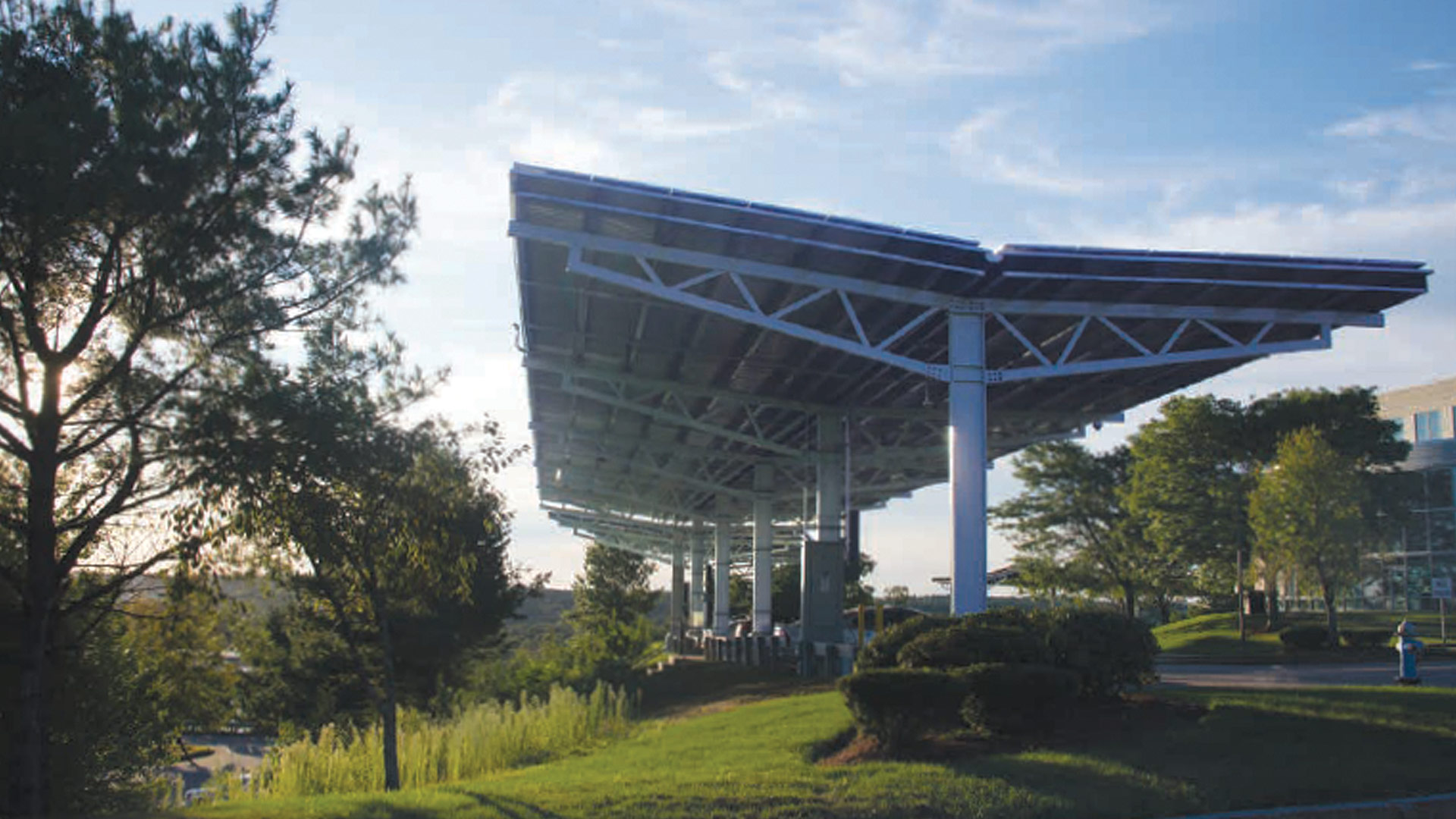
The Eversource solar panel and charging station in Westwood, Mass.
“We’ve been consistently ranked the number-one energy-efficiency provider in the nation,” he noted, due in large part to an effective partnership with the Bay State, which, along with California, traditionally has the strongest energy-efficiency policies in the nation, and Connecticut and New Hampshire as well. “We try to reach out to all our customers — residential, industrial, commercial, and communities as well — to espouse the values of energy efficiency; it really is the first fuel. If you can reduce your energy consumption, you’re cutting down on your own bill, but that also provides great benefits for the environment and clean-energy strategy.
“That’s the foundation of our clean-energy strategy,” he went on, adding that, for every dollar invested in energy-efficiency initiatives, the customer receives $3 return on that investment. And this is true across the board, whether it’s a residential customer that undertakes an energy audit and tunes up a furnace for the winter, or a commercial customer that installs more energy-efficient lighting.
Overall, Eversource invests $500 million in energy-efficiency initiatives, which yield $1.5 billion in benefits for those 4 million customers, while also contributing to sharp reductions in greenhouse-gas emissions, from more than 2.5 million metric tons of carbon dioxide in 2014 to roughly 800,000 tons in 2018.
Also contributing to those numbers are initiatives that help customers connect solar and other distributed-generation resources to the grid.
“We’ve made those investments to modernize the electric grid and make it ready for taking distributed energy, whether it’s solar or other distributed-energy resources,” Hunt explained, adding that the company also owns and operates some utility-scale solar operations, such as the one constructed on the brownfield site at the former Chapman Valve complex in Indian Orchard, a facility that he described as a model for the state when it comes to showcasing larger-scale solar energy and forging partnerships with communities to make such projects happen.
Elaborating, he said Eversource is currently working with the Massachusetts legislature to expand the cap on the solar capacity the utility can develop. Currently, that cap is 70 megawatts, and Eversource is at that number through the creation of several sites across the state.
Fueling Optimism
There are other components to this clean-energy strategy, said Hunt, listing windpower initiatives — the company is partnering with Orsted, the largest and most successful operator of offshore wind in the world, to develop up to 4,000 megawatts of offshore wind capacity, reducing carbon emissions by millions of tons each year — as well as energy-storage steps that will reduce the need for fossil-fuel-powered generation, while improving power quality and reliability.
These are, of course, part of the company’s own efforts to become carbon-neutral. As noted, this strategy has a number of components, from divesting fossil-fuel plants to offshore wind and solar; from improving efficiency at its many facilities to making its own fleet of vehicles greener, although much work remains in that realm, as we’ll see.
“We’ve made those investments to modernize the electric grid and make it ready for taking distributed energy, whether it’s solar or other distributed-energy resources.”
These efforts, as noted, have put the company more than 90%, and perhaps even 95%, of the way toward its goal of carbon neutrality. But, as Hunt said, the last mile is traditionally the most difficult, although he believes the goal is attainable.
“We’re a leading energy-efficiency provider. We can reduce our consumption in the 150 facilities we own and operate in New England be more efficient with lighting and energy use, procure more clean-energy resources to power those buildings … we’re developing that plan; we’re building smarter buildings to get to net-zero-energy for the buildings we operate.”
As for the fleet, there are electric vehicles in that fleet, mostly lighter models, and there are charging facilities at all of Eversource’s facilities, he noted. But the heavier trucks, including those used to restore power when there are outages, are more difficult to convert to electric.
“But we’re looking at innovations, like hybrid vehicles that might be powered by diesel today, but might be powered down while they’re doing work, with the buckets running on electric only,” Hunt said. “When you think about how these vehicles have operated, they’ve had to be on and idling so you can run the power on that arm. Today, we’re investing in hybrid types of vehicles that we can power down.
“We’re not far off,” he continued. “There’s a lot of research and a lot of investment going into electrification of more heavy-duty vehicles; there will be a day when 18-wheel vehicles are powered electrically and run autonomously.”
Meanwhile, on the gas-business side, the company is working to tighten up its infrastructure, some of it built 100 or more years ago and now prone to leaks. And these efforts will grow in scope with the acquisition of Columbia Gas, which operates in Brockton, Lawrence, and Springfield and boasts some 330,000 customers.
“We’ll be making the same kind of investments in upgrading older infrastructure and reducing leaks in the Columbia Gas system,” he noted. “In making the decision to purchase those assets, we assessed all that, and we’re committed to achieving it. It will make our goal of carbon neutrality even more challenging, but we’re up to the challenge.”
Beyond infrastructure, Eversource is also looking into cleaner, more efficient natural-gas options.
“Natural gas is an important bridge to a clean-energy future,” he explained. “Our customers depend on it, and it’s a cleaner, more cost-effective fuel for home heating and thermal needs than oil or electric. But we’re exploring ways to inject cleaner natural gas — and that might be biogas from agriculture or, further down the road, injecting hydrogen gas into our natural-gas system to further offset methane use; we’re exploring those opportunities.”
Powerful Arguments
Returning to the matter of that countdown clock, Hunt said Eversource has set benchmarks for different points over the next decade, and will be developing a scorecard, as well as an offset strategy, for its quest for carbon neutrality.
“We’ve got nine years to get there, but in many respects, that’s right around the corner — that’s not far away,” he noted, adding, again, that the goal is ambitious, but reachable.
In short, a utility that has in many ways set the standard when it comes to energy efficiency and clean-energy use is looking to continue that tradition.
George O’Brien can be reached at [email protected]



